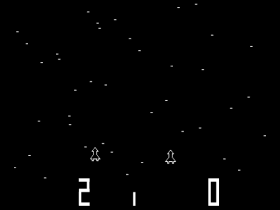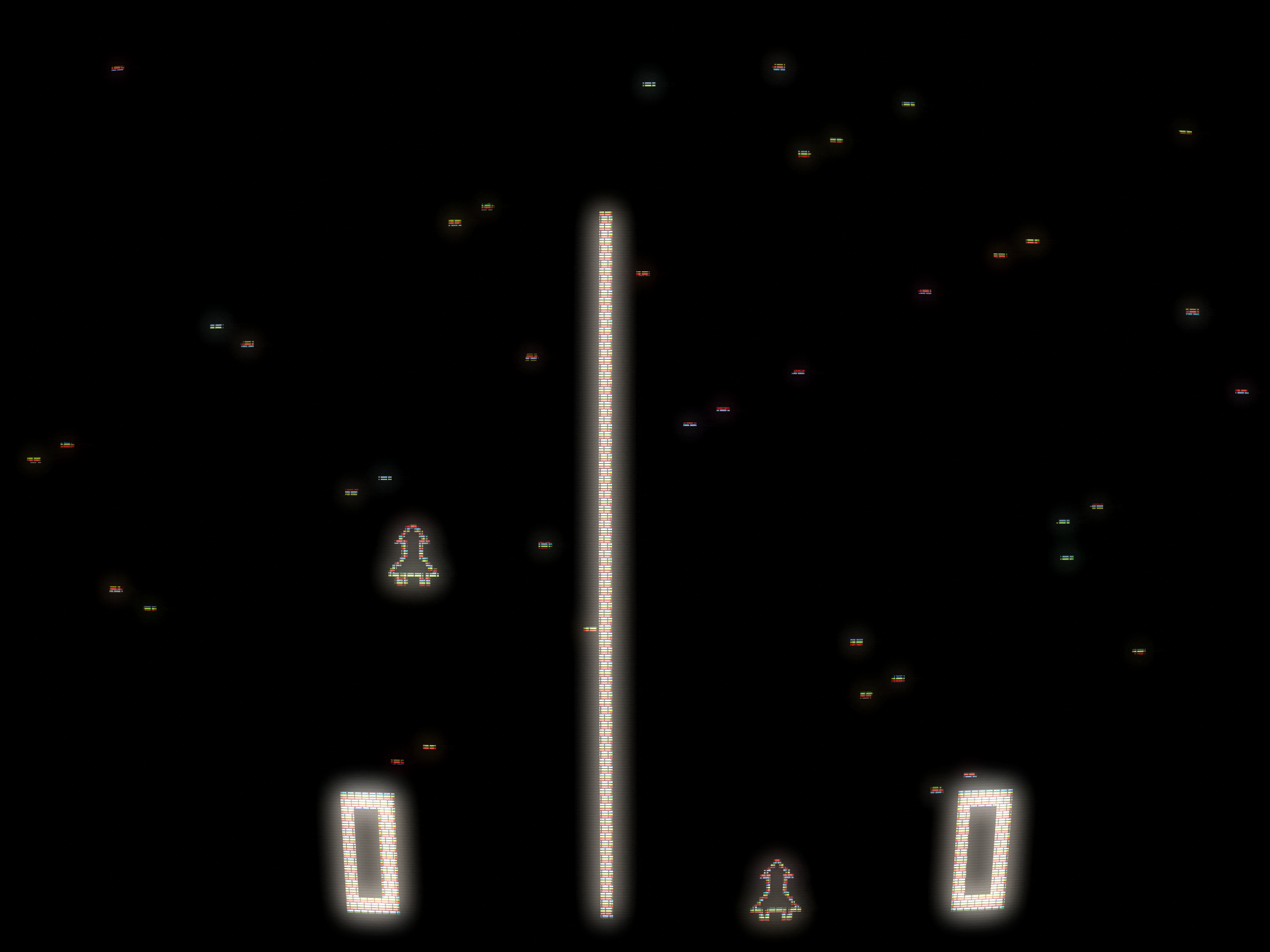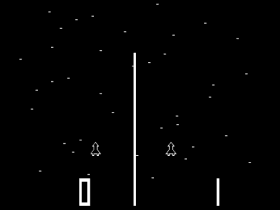 The Game: Two rockets stand ready to lift off for a race into space teeming with fast-moving asteroids and space debris. Collision with even the tiniest piece of space junk sends a player’s rocket back to the bottom of the screen, with a slight time penalty (possibly for repairs) before it can lift off again. A vertical line in the center of the screen serves not only to divide the screen into “lanes” for each rocket, but to count down the amount of time remaining in the game. Whoever has the highest score when time runs out is the winner of the space race. (Atari, 1973)
The Game: Two rockets stand ready to lift off for a race into space teeming with fast-moving asteroids and space debris. Collision with even the tiniest piece of space junk sends a player’s rocket back to the bottom of the screen, with a slight time penalty (possibly for repairs) before it can lift off again. A vertical line in the center of the screen serves not only to divide the screen into “lanes” for each rocket, but to count down the amount of time remaining in the game. Whoever has the highest score when time runs out is the winner of the space race. (Atari, 1973)
Memories: Having scored instant success with Pong, Atari immediately had to contend with one of the side-effects of success: copycats. Dubbed “the jackals” by Atari co-founder Nolan Bushnell, they copied Pong, releasing their own unchanged versions of it under different names. Even companies that would become some of the biggest innovators in the nascent arcade industry made their first steps away from pinball and toward coin-operated video amusements by copying Pong.
And now, to make matters worse, thanks to a pre-existing contract that was taken on in order to keep cash flowing into Atari’s coffers as an untried startup company, Atari was going to have to surrender one of its games to one of those competitors.
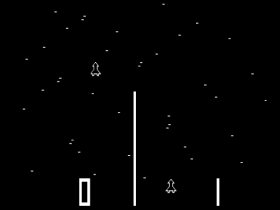 Atari had taken on a game design contract with Midway, a division of Bally, at a time when Atari had yet to score a success, and that contract had to be fulfilled; making things a little uneasy was the fact that Midway’s earliest entry into the video game business was Winner, a straight-up unaltered clone of Atari’s Pong. The basic idea for Space Race had been conceived during the design process that led to Computer Space, but had been put on the back burner, not revisited until after Pong‘s release. It was decided not only to revive Space Race to complete the Midway contract (Midway would release it as Asteroid, one plural away from the name of a future Atari mega-hit), but that Atari would simultaneously release its own version under the name Space Race, effectively copycatting its own
Atari had taken on a game design contract with Midway, a division of Bally, at a time when Atari had yet to score a success, and that contract had to be fulfilled; making things a little uneasy was the fact that Midway’s earliest entry into the video game business was Winner, a straight-up unaltered clone of Atari’s Pong. The basic idea for Space Race had been conceived during the design process that led to Computer Space, but had been put on the back burner, not revisited until after Pong‘s release. It was decided not only to revive Space Race to complete the Midway contract (Midway would release it as Asteroid, one plural away from the name of a future Atari mega-hit), but that Atari would simultaneously release its own version under the name Space Race, effectively copycatting its own 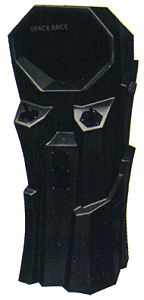 game. (You know what they say paybacks are.)
game. (You know what they say paybacks are.)
Atari also splurged on another unique fiberglass upright cabinet for the first 50 units of Space Race produced, hearkening back to the bespoke design of Bushnell’s Computer Space in 1971, though decidedly more angular and futuristic. This quickly proved to be more expensive than expected, so a much more basic form factor was adopted for the game in record time. Midway’s Asteroid never aspired to this futuristic look; its cabinet was relatively prosaic from the beginning. (Also, as you might well imagine, Midway was less than thrilled to see Atari’s Space Race hit arcades alongside Asteroid.)
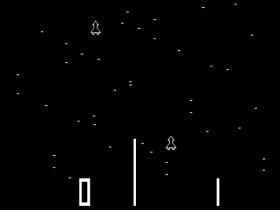 As a game, Space Race is simple fun: “avoid letting anything hit you” is right up there with “avoid missing ball for high score” for simplicity. Given that Pong‘s success over Computer Space was down to Pong‘s simplicity over Computer Space‘s geek-pleasing but crowd-alienating complexity, it’s easy to see why Bushnell made the strategic decision to not let the competition lay all claim to Space Race. But even with that in mind, Space Race didn’t reach the, er, meteoric heights of Pong – not by a long shot.
As a game, Space Race is simple fun: “avoid letting anything hit you” is right up there with “avoid missing ball for high score” for simplicity. Given that Pong‘s success over Computer Space was down to Pong‘s simplicity over Computer Space‘s geek-pleasing but crowd-alienating complexity, it’s easy to see why Bushnell made the strategic decision to not let the competition lay all claim to Space Race. But even with that in mind, Space Race didn’t reach the, er, meteoric heights of Pong – not by a long shot.
 As with the real space race of the 1960s, nothing about this new industry was going to be easy, and even Atari couldn’t rest on its Pong-scented laurels.
As with the real space race of the 1960s, nothing about this new industry was going to be easy, and even Atari couldn’t rest on its Pong-scented laurels.
